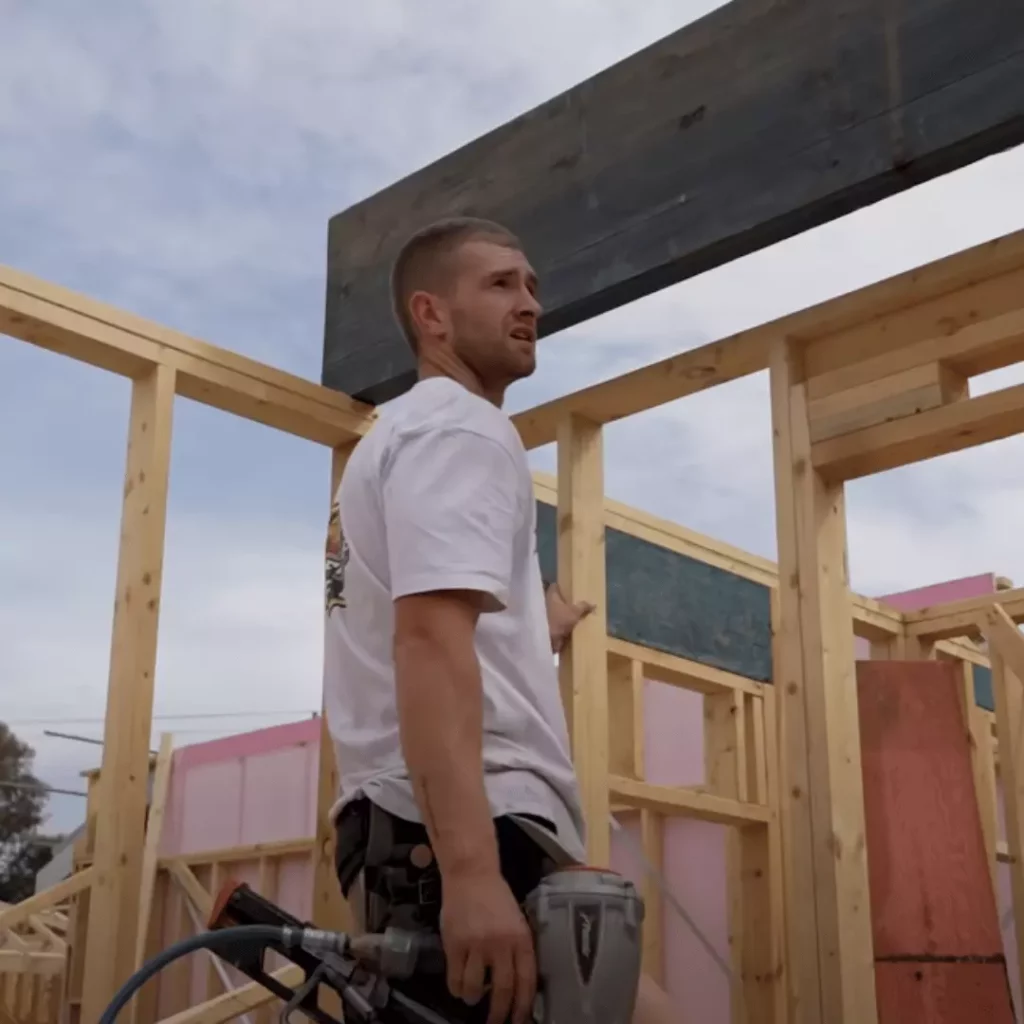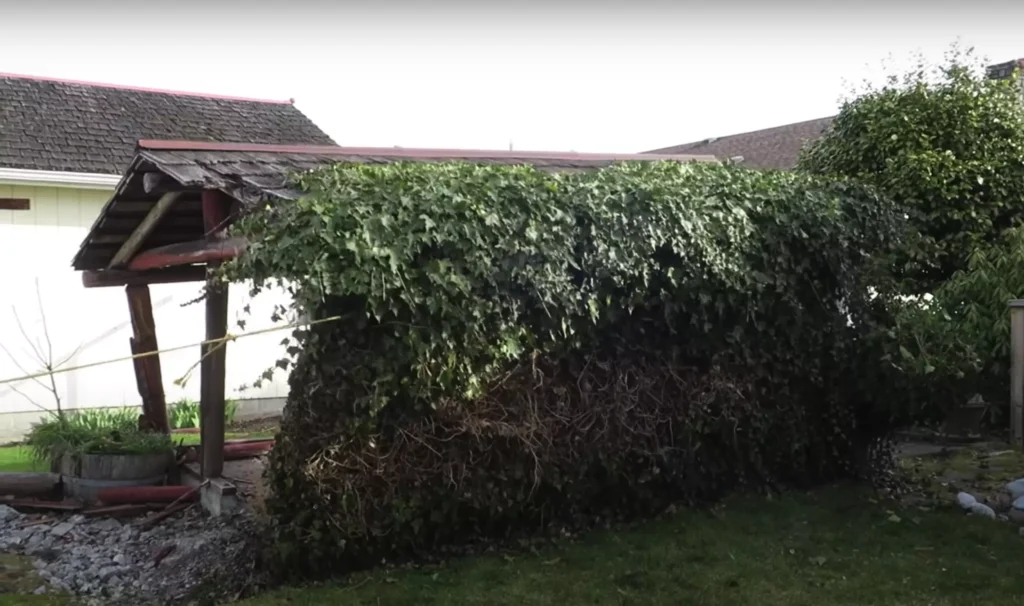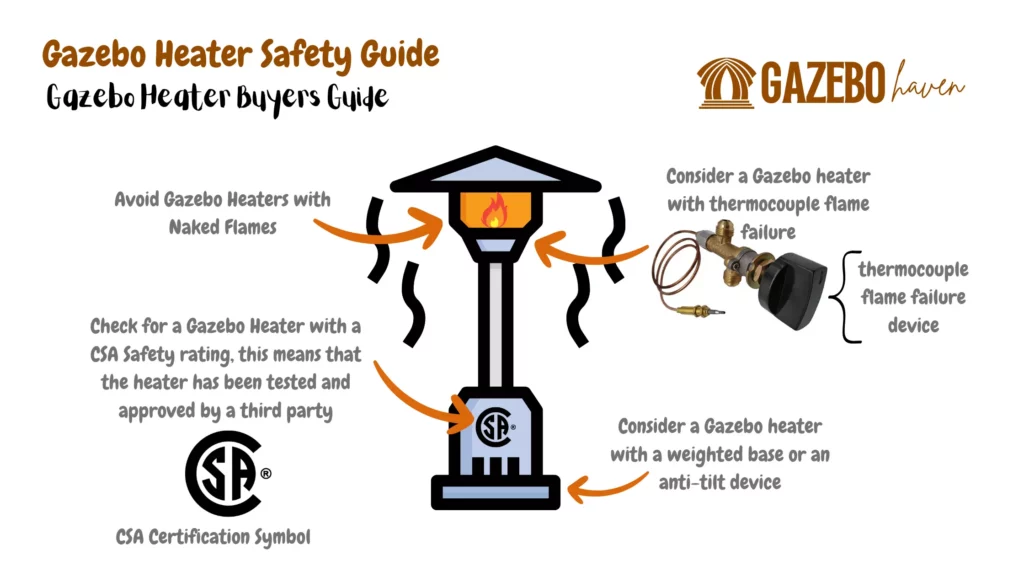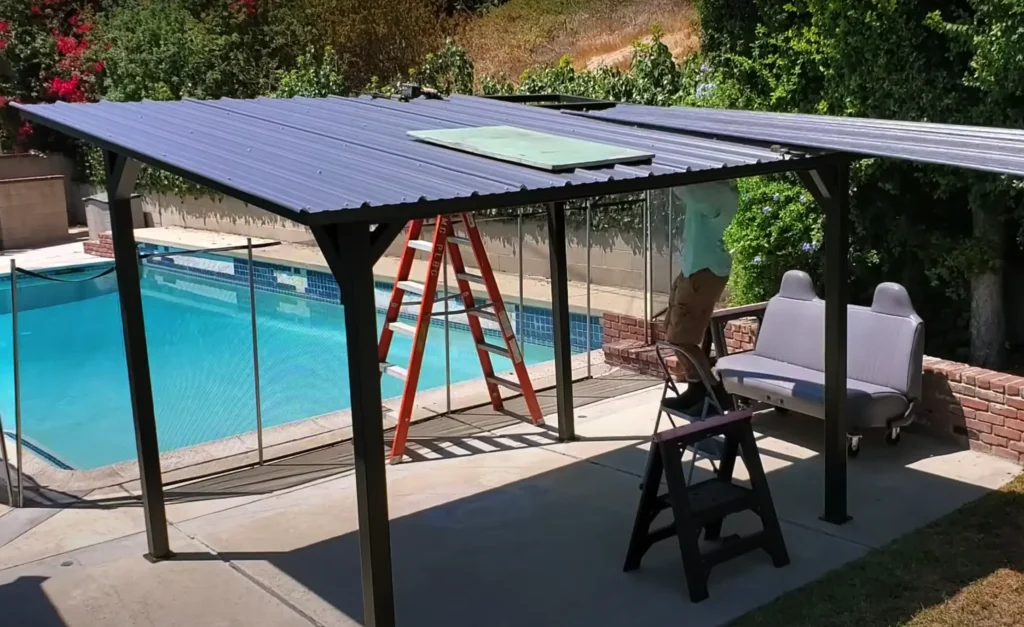Wondering if you can put a gazebo on grass? Here are some expert insights on the steps, considerations, anchoring methods, and factors to consider to ensure the stability of your gazebo while allowing your grass to thrive and grow.
Before purchasing a gazebo, it’s essential to ensure you know where you will place it because the place you want to place your gazebo will play a part in determining the best one suitable for such grounds. Check our list of the best Gazebo Kits available in the market today!
We have installed gazebos on Patios/Decks, Poolside, beach fronts, and rooftops; problems and many questions arise when a client wants to place their gazebo in their garden r backyard, and the location has grass on it.
Can You Put a Gazebo on Grass?”
The answer is Yes; it’s 100% possible to put a gazebo on grass; the best type of gazebo to install on glass are metal gazebo with an open floor and sides to allow air and sun rays that will enable that grass to grow and thrive, there are specific challenges that you will need to address such as the stability of the foundation, and anchoring the gazebo on grass.

Ground preparation is required to make sure it will be able to provide the best support to your gazebo structure; we advise a client to check the firmness of the ground and at least compact the ground on the places that the gazebo poles or bases will be placed, you can put compacted gravel or sand in such locations.
Soil is prone to shifting or erosion, especially when the weight of the gazebo is placed on it; you might check out gazebo concrete footing, which we believe is the best alternative gazebo foundations for soi prone to shifting, erosion, or on sloppy grounds.
Suppose you want to plant grass on your gazebo floor. In that case, we recommend looking for dwarf or low-growing grass such as Fine Fescue, Centipedegrass, Zoysia grass, St. Augustinegrass, or Buffalo grass that doesn’t require much light, humidity, water, and temperature.
What types of gazebos can go on grass?
There are so many types of gazebos available today; if your ground is filled with glass, there are some of the best gazebos that can be installed on such grounds; they include gazebos with open floors and open sides to allow light and airflow, you will also need gazebos with posts that will not be affected by the moist grounds, and you will need to water the ground for soil to thrive and grow.
The best types of gazebos that can go on grass are aluminum gazebos with open floors and open sides because grass requires light, water, and oxygen; compared to enclosed gazebos that will block light and oxygen, gazebos with aluminum poles are better than wooden gazebos which can rot due to moisture, an aluminum gazebo is not prone to rust. Also, they are the best types of gazebos that you can be placed on alternative footings such as concrete.
Steps for installing a gazebo on grass.
Now that you know what factors to consider when placing a gazebo on glass, and this information has helped you buy the best gazebo for your grass-covered garden or backyard, its time to let you know the process we take to make sure the gazebo is installed correctly on grass-covered grounds.
Ground Clearing.
The first step is to remove obstacles on the ground, such as rocks and debris; you will also need to remove outdoor décor that is placed in your garden or backyard, such as planters, so that you can have a clear ground to work on, it will also help you check for measurements, and level the gazebo when installing it with interference from the obstacles.
Preparing the ground.
To help you prepare the ground, you will need to check the measurements of your gazebo footprints, especially the distance between the poles that will be anchored to the ground; the central part of the focus is the poles installation points, if you are installing a concrete footing, you will need to dig the base of the gazebo support poles, the best gazebo concrete footing should be at least 4″ depth, and additional depth and width of your ground are loose for added weight distribution and stability, the added depth and width will help add compacted soil or gravel.
Prepare your gazebo bases.
We recommend concrete footings for gazebos put in the grass; this is because the concrete footing will raise the gazebo to prevent being in contact with soil, which will be watered for grass to grow and thrive; it will also create a barrier between the solid and crass to prevent rust that will occur due to contact with air from the soil and water.
Depending on the size of your gazebo, you can place rebars for big-sized gazebos or just poor concrete for small-sized gazebos; you should pour concrete based on the manufacturer guidelines and place anchor brackets that you will later install the gazebo poles and allow the concrete to cure for at least ten days.
Place the Gazebo
After ten days, your concrete footing will be cured, and you are now ready to install your gazebo; carefully position your gazebo on the anchor brackets on your concrete footing; we recommend installing at least the frames of your gazebo on the same day to avoid windsail effect on your gazebo, after installing the gazebo it’s time to support the structure by using anchors and weights.
Anchoring your gazebo.
The size of your gazebo will determine the anchoring methods that you will choose f your gazebo and also the environmental conditions; if you live in windy or rainy areas, you should use heavy-duty and heavy-duty weights and anchor tools; this should also apply to oversized and heavier gazebos too.
To help anchor your gazebo in the ground, we have listed below some effective methods to help you secure your gazebo in the grass.
How do you secure a gazebo to the grass?
Below are some of the methods that you can use to secure a gazebo on grass; its also important to check your gazebo installations instructions for recommended anchoring methods;
Stakes or Ground Anchors
If you have bought a small, lightweight gazebo, you can anchor the gazebo with stakes or ground anchors; these are long metal stakes that are screwed or hammered to the ground and tired to the poles of your gazebo; they are also cheaper compared to sandbags and weights.
Concrete Footings
If you did not follow our process of preparing the ground for a gazebo placed on grass, and you would like a permanent anchoring method for your permanent gazebo, we recommend pouring concrete footing; concrete footings are suitable for heavy and large-sized gazebos and also permanently placed gazebos, concrete footings allow you to place anchor bolts and brackets that will help secure your gazebo to the ground.

Anchoring the Gazebo With Planters.
One of the best methods of anchoring a gazebo, especially for homeowners who have a grass backyard or garden, is to use planters that will compliment the natural look of your backyard or garden, gazebo plant anchors are visually appealing and also play a significant and creative way of anchoring your gazebo.
Best Plastic Planter for Anchoring a Gazebo
The size, design, and weight of your plant anchors will be determined by the size and type of your gazebo; large and heavy gazebos will require heavy and sturdy planters placed on the legs of your gazebo and attached to the legs using straps for lightweight gazebos you can use hanging planters that can also be attached to the legs of your gazebo or the beams, and take this opportunity to plant hanging plants or foliage to blend them and the surrounding areas seamlessly.
Gazebo Weights
If you find that you have compacted soil bases and own a gazebo that is taken down after use, you can consider sandbags or weights attached to the legs of your gazebo for added weight to prevent your gazebo from being blown by the wind.
Best Gazebo Weights for Pop-Up Gazebos.
Tie-Downs or Ratchet Straps
If your backyard and garden have fixed objects such as trees, rocks, and other heavy objects, you can consider using tie-downs or ratchet straps that can be attached to the gazebo frames and anchored to the fixed objects; this is a cheap and effective method of anchoring a gazebo.
Ratchet Straps for Anchoring a Gazebo to Objects.
Combination Methods
Depending on the size of your gazebo, ground conditions, and your budget, you can also use a combination of anchoring methods, for example for a large gazebo with loose grounds; you can use a combination of concrete footings and also use weights and ground anchors to secure the gazebo to the ground, for small sized gazebos you can combine ground stakes and weights.
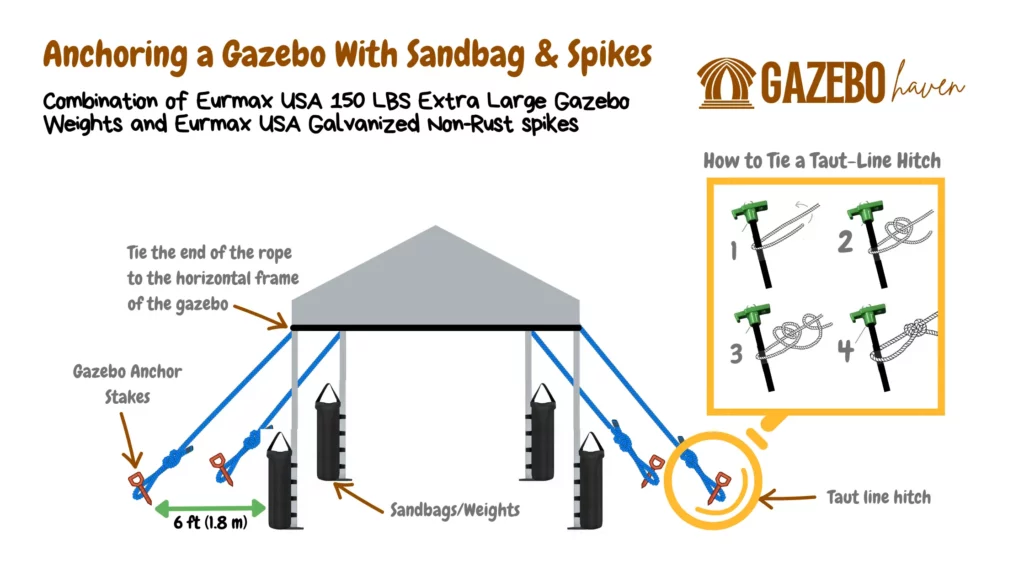
Conclusion
It’s possible to put a gazebo on grass; some factors to consider include; the type of your gazebo, the size of your gazebo, your ground conditions, and your anchoring methods. We highly recommend aluminum gazebos with open floors and sides as they will allow the grass to thrive and grow compared to enclosed gazebos that will kill the grass due to lack of light and oxygen.
We also recommend considering concrete footings for permanent gazebos and also making sure you have anchoring methods to secure your gazebo to the ground and prevent it from being blown by the wind; some methods to anchor your gazebo includes using stakes, ground anchors, weights, or tie-downs.
Last update on 2024-10-01 / Affiliate links / Images from Amazon Product Advertising API




